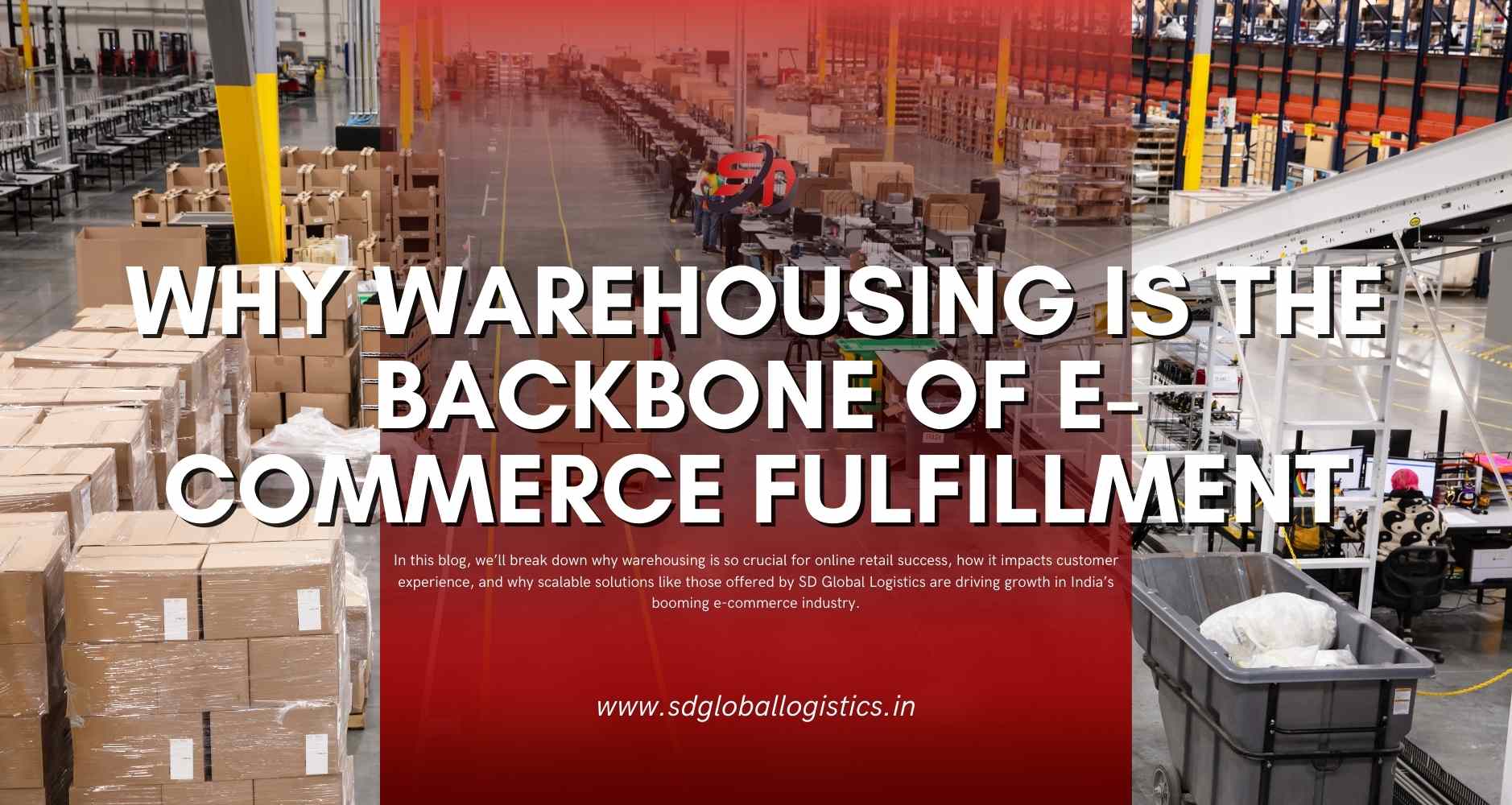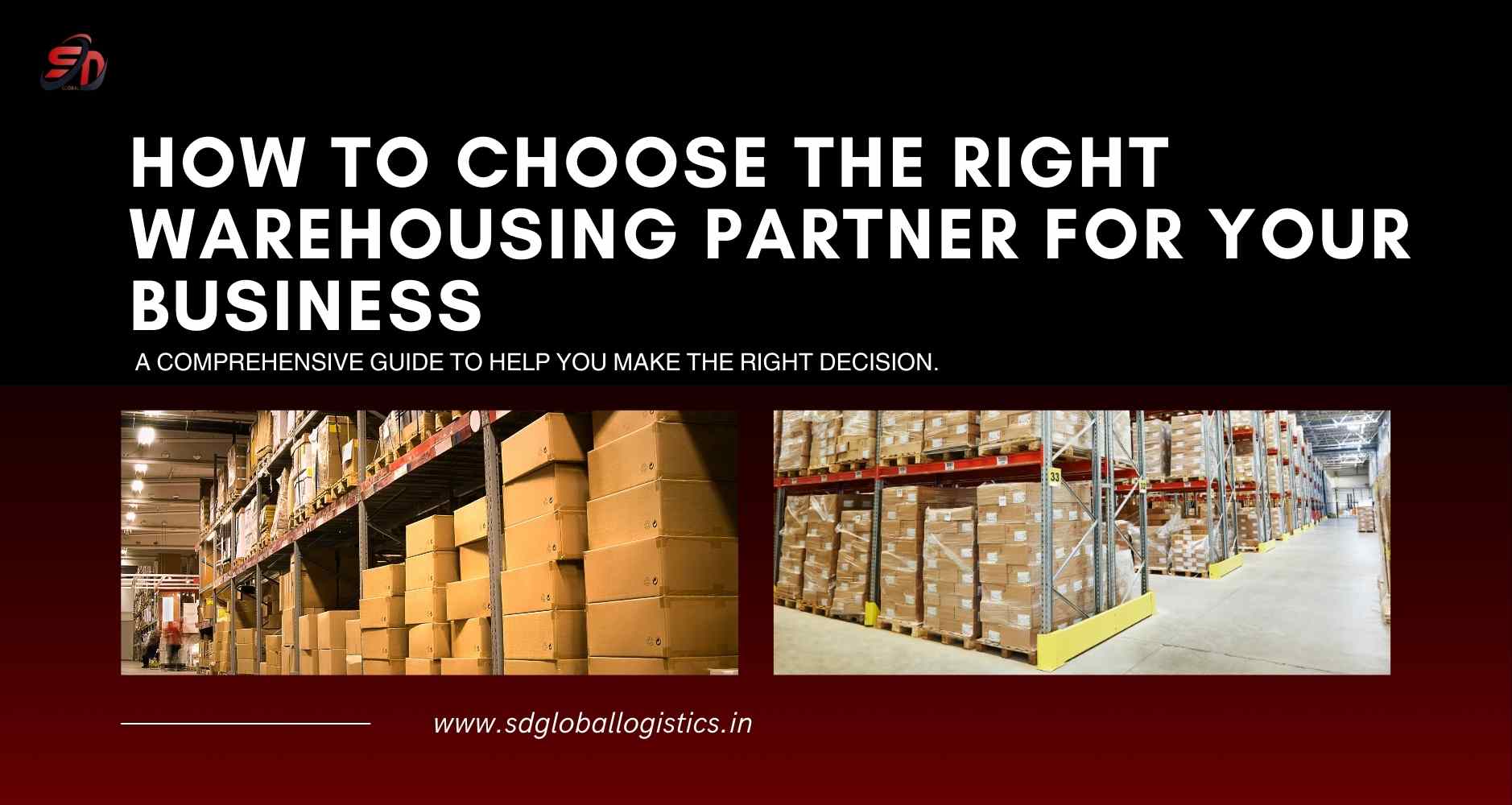
Why Warehousing is the Backbone of E-commerce Fulfillment
E-commerce has changed the whole world of trade. The list of what you could buy online over the last few years has lengthened to include groceries, electronics, clothes, and even luxury products. However, while customers are only able to see the beautiful and user-friendly online platform, the real magic is going on behind the scenes - in warehouses and fulfillment centers.
What if there was no warehousing for e-commerce? Non-existence of warehousing for e-commerce will result in the stoppage of smooth order processing, inventory management, and returns handling. Actually, warehousing is the backbone of e-commerce fulfillment, which is letting businesses by giving them the opportunity to hmeet customer expectations of speed, accuracy, and reliability.
In this blog, we’ll break down why warehousing is so crucial for online retail success, how it impacts customer experience, and why scalable solutions like those offered by SD Global Logistics are driving growth in India’s booming e-commerce industry.
Search Here
Recent Posts
Why Warehousing is the Backbone of E-commerce Fulfillment
What is E-commerce Fulfillment?
E-commerce fulfillment means the complete process of receiving and processing online orders, picking and packing the products, sending them to customers, and the management of returns. It comprises the following:
 Inventory storage at warehouses
Inventory storage at warehouses
 Order picking & packaging
Order picking & packaging
 Shipping & delivery
Shipping & delivery
 Returns & reverse logistics
Returns & reverse logistics
Why Fulfillment Defines Customer Experience
Customers of today expect that their orders will be delivered the same day or the next day, that what they ordered is correct, and that they will return the goods easily if necessary. The quality of your fulfillment operations decides the extent of your customer loyalty.
For example, Amazon Prime is one of the fastest delivery services in the world, and through this, it is setting a pack of businesses that have to follow its lead in this speed of delivery. Businesses all over the world are doing their best to compete with It. Warehousing is where your big role comes in.
The Core Role of Warehousing in E-commerce
Warehousing is like the heart of e-commerce fulfillment. It’s the link between the suppliers, sellers, shipping partners, and customers. Without well-maintained warehouses, companies are at risk of having deliveries arriving late, poorly managing their inventory, and running afoul of their customers.
Key contributions of warehousing to e-commerce:
 Centralized inventory storage
Centralized inventory storage
 Real-time order processing
Real-time order processing
 Streamlined supply chain
Streamlined supply chain
 Reduced delivery times through strategic locations
Reduced delivery times through strategic locations
E-commerce Warehousing Services
At its core, e-commerce warehousing is not just about storing goods. It is a comprehensive service that enables businesses to scale efficiently. Essentially, e-commerce warehousing is more than just warehousing. It is a holistic service that empowers businesses to grow harmoniously.
1. Storage and Inventory Management
Warehouses are the perfect places to house thousands of SKUs (Stock Keeping Units). using WMS (Warehouse Management Systems), companies are able to monitor inventories in real-time and avoid the situations of running out of or overstocking goods.
2. Picking, Packing & Shipping Operations
Automation, barcode scanning, and conveyor systems are used in modern fulfillment centers to quickly and accurately pick and pack orders. Also, the right packaging guarantees that the products are less likely to be damaged during transportation.
3. Returns Management
Since return rates in e-commerce are usually between 15% and 30%, the existence of a smooth returns process is very important. The services of warehousing make sure of:
- Inspection of returned goods
- Restocking or disposal decisions
- Customer-friendly reverse logistics
This builds customer trust and strengthens brand reputation
Fulfillment Centers vs. Warehouses
In the world of e-commerce logistics, people often confuse warehouses with fulfillment centers, thinking them to be the same. Both are essential in supply chain management, but they have very different functions. It is crucial for online businesses to grasp the distinction if they want to provide quicker delivery and keep their customers satisfied.
What is a Warehouse?
A warehouse can be thought of as a giant storage room mainly meant for the safekeeping of goods for a long time. It is the place where the stock is kept until the time it is required. Warehouses are very practical in the cases of wholesalers, manufacturers, or retailers who manage the stock in large quantities.
Key characteristics of warehouses:
- Focused mainly on inventory storage
- Ideal for bulk shipments and wholesale distribution
- Limited emphasis on packaging or shipping individual customer orders
- Suited for businesses with longer sales cycles
For example, a furniture manufacturer may keep its stock in a warehouse until bulk shipments are sent to dealers or retail stores.
What is a Fulfillment Center?
On the contrary, a fulfillment center is a facility that is much more active. It is a place that is primarily designed for the processes of e-commerce order processing, picking, packing, shipping, returns, etc. Instead of storing products indefinitely, fulfillment centers aim at quick stock turnover, thereby moving products to customers faster.
Key characteristics of fulfillment centers:
- Handles daily order processing from multiple sales channels
- Equipped with systems for picking, packing, and labeling
- Integrates with couriers for last-mile delivery
- Manages returns and reverse logistics
- Ideal for businesses with high order volumes and fast-moving invento
Why Warehousing is Important for E-commerce
1. Speed of Delivery
In today's world, customers expect to have their goods delivered within 2 days or even less. The shipping time can be shortened by warehouses that are situated in a strategic manner. Hence, rapid shipping is guaranteed.
2. Scalability of Operations
Orders could skyrocket during festivals or flash sales; thus, the volume of orders increases. Warehousing makes it possible for businesses to temporarily extend their operations without having to commit to any sort of permanent installations.
3. Enhanced Customer Satisfaction
Loyalty among customers is one of the advantages resulting from punctual delivery, and precisely what has been ordered, and effortless returns. These are the things that bring back customers to your business.
Inventory Management for Online Stores
Effective inventory management is the lifeline of online businesses. Poor stock management can lead to lost sales or high carrying costs.
Warehousing helps businesses with:
 Real-time stock visibility
Real-time stock visibility
 SKU-level tracking
SKU-level tracking
 Demand forecasting using AI & data analytics
Demand forecasting using AI & data analytics
 Prevention of stockouts & overstocks
Prevention of stockouts & overstocks
For example, an online apparel store with proper warehousing can immediately update stock levels across multiple platforms like Amazon, Flipkart, and Shopify.
Key Pillars of E-commerce Warehousing: Inventory, Fulfillment, Returns, and WMS
1. Order Fulfillment and Warehousing
Order fulfillment depends heavily on warehousing. A strong warehousing system ensures:
 Fast picking and packing
Fast picking and packing
 Error-free order processing
Error-free order processing
 Reduced last-mile delivery delays
Reduced last-mile delivery delays
2. Returns Management for E-commerce
Returns are part and parcel of online shopping. Whether due to wrong size, product defects, or customer dissatisfaction, returns can affect profitability if not managed well. Warehouses help in:
 Handling reverse logistics efficiently
Handling reverse logistics efficiently
 Sorting and refurbishing items
Sorting and refurbishing items
 Managing refunds or exchanges quickly
Managing refunds or exchanges quickly
A smooth returns process encourages more customers to shop confidently.
3. WMS for E-commerce Fulfillment
A Warehouse Management System (WMS) is software that streamlines warehousing operations.Benefits of WMS in E-commerce:
 Real-time inventory tracking
Real-time inventory tracking
 Automated order assignment
Automated order assignment
 Barcode/RFID integration for accuracy
Barcode/RFID integration for accuracy
 Data-driven decision-making
Data-driven decision-making
For instance, SD Global Logistics integrates WMS solutions that allow businesses to manage thousands of daily orders without error.
Scalable Warehousing Solutions in India
The e-commerce market in India is projected to reach $200 billion by 2026. As a result of such phenomenal expansion, however, scalable warehousing solutions in India are vital.
 Flexible storage models to handle seasonal spikes
Flexible storage models to handle seasonal spikes
 3PL (Third-Party Logistics) partnerships for SMEs and startups
3PL (Third-Party Logistics) partnerships for SMEs and startups
 Pay-as-you-use warehousing to reduce fixed costs
Pay-as-you-use warehousing to reduce fixed costs
Through the outsourcing to logistics partners such as SD Global Logistics, enterprises can expand their operations rapidly thus, no need to make a huge capital investment in infrastructures.
Conclusion
Warehousing has changed its position in the market as it is no longer a storage solution—it is the basic foundation of e-commerce success. Moreover, from inventory management to the fast delivery of orders and the facilitation of return, every aspect of online shopping has become highly reliant on efficient warehousing.
For businesses in India, scalable warehousing solutions provided by logistics experts like SD Global Logistics are essential to stay competitive. As technology evolves, the role of warehousing will only grow stronger—making it the true backbone of e-commerce fulfillment.
It ensures fast deliveries, proper stock management, and hassle-free returns, all of which directly affect customer satisfaction.
A warehouse mainly stores goods, while a fulfillment center also manages order processing, packaging, shipping, and returns.
Accurate orders, fast shipping, and smooth returns improve customer trust and brand loyalty.
WMS, robotics, AI forecasting, IoT-enabled tracking, and automation tools.
Yes. By partnering with 3PL providers, small businesses can scale without investing in expensive infrastructure.























